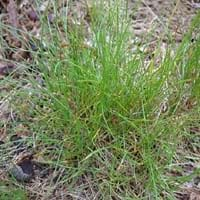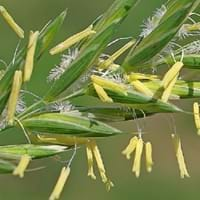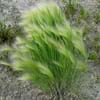Life Span
Perennial
Annual
Origin
Southern Europe
Not Available
Types
Fine leaved sheep's fescue
Not Available
Habitat
Mountain Slopes, Pastures
Wet lands
USDA Hardiness Zone
4-8
Not Available
AHS Heat Zone
8 - 1
Not Available
Sunset Zone
1a, 1b, 2a, 2b, 3a, 3b, 4, 5, 6, 7, 8, 9, 10, 11, 12, 13, 14, 15, 16, 17, 18, 19, 20, 21, 22, 23, 24
Not Available
Habit
Spreading
Not Available
Minimum Height
Not Available
Flower Color
Pale White
Indigo
Flower Color Modifier
Bicolor
Bicolor
Fruit Color
Non Fruiting Plant
Brown
Leaf Color in Spring
Blue Green
Not Available
Leaf Color in Summer
Light Green
Light Green
Leaf Color in Fall
Blue Green
Not Available
Leaf Color in Winter
Green, Tan
Not Available
Leaf Shape
Grass like
Grass like
Plant Season
Spring, Fall
Not Available
Sunlight
Full Sun, Partial Sun
Full Sun, Partial Sun
Growth Rate
Fast
Not Available
Type of Soil
Clay, Loam
Moist
The pH of Soil
Neutral, Alkaline
Acidic, Neutral, Alkaline
Soil Drainage
Average
Average
Bloom Time
Not Available
Not Available
Repeat Bloomer
No
Not Available
Tolerances
Not Available
Not Available
Where to Plant?
Ground
Ground
How to Plant?
Seedlings, vegetative cuttings
Seedlings
Plant Maintenance
Medium
Medium
Watering Requirements
Allow to dry out slightly between watering, Never Over-water
Requires watering in the growing season
In Summer
Lots of watering
Lots of watering
In Spring
Moderate
Moderate
In Winter
Average Water
Average Water
Soil pH
Neutral, Alkaline
Acidic, Neutral, Alkaline
Soil Type
Clay, Loam
Moist
Soil Drainage Capacity
Average
Average
Sun Exposure
Full Sun, Partial Sun
Full Sun, Partial Sun
Pruning
Prune after flowering, Prune for size control, Remove dead or diseased plant parts
Remove damaged leaves, Remove dead branches, Remove dead leaves
Fertilizers
All-Purpose Liquid Fertilizer
All-Purpose Liquid Fertilizer
Pests and Diseases
Brown patch, Gray leaf blight, Pythium blight, Rust, Zoysia patch
Red blotch
Plant Tolerance
Full Sun, Heat And Humidity
Drought
Flowers
Insignificant
Not Available
Flower Petal Number
Single
Single
Edible Fruit
No
Not Available
Foliage Texture
Medium
Not Available
Foliage Sheen
Matte
Not Available
Invasive
Sometimes
Not Available
Attracts
Mealybugs, Mites
Deers
Allergy
Skin rash, Vomiting, Watery eyes
Not Available
Aesthetic Uses
Ground Cover, Used in parkland
small hedge
Beauty Benefits
Not Available
Not Available
Environmental Uses
Fixes Nitrogen, Prevent Soil Erosion
Air purification
Medicinal Uses
Antispasmodic
Diuretic, Prevention of convulsion
Part of Plant Used
Whole plant
Leaves
Other Uses
Animal Feed, Used as Ornamental plant
Used as Biofuel
Used As Indoor Plant
No
No
Used As Outdoor Plant
Yes
Yes
Garden Design
Groundcover, Lawns and Turf
Not Available
Botanical Name
FESTUCA brevipila
PANICUM
Common Name
Hard Fescue
Panicum
In Hindi
Hard fescue
panikom
In German
Echter Schaf-Schwingel
panikom
In French
Hard fescue
panikom
In Spanish
fétuque ovine
panikom
In Greek
HARD φεστούκα
Panicum
In Portuguese
Hard fescue
Panicum
In Polish
Hard fescue
Panicum
In Latin
Hard fescue
Panicum
Phylum
Magnoliophyta
Magnoliophyta
Class
Liliopsida
Liliopsida
Clade
Angiosperms, Commelinids, Monocots
Angiosperms, Commelinids, Monocots
Tribe
Not Available
Not Available
Subfamily
Not Available
Panicoideae
Number of Species
Not Available
Difference Between Hard Fescue and Panicum
If you are confused whether Hard Fescue or Panicum are same, here are some features about those plants to help you choose better. Many people think that these two plants have the same characteristics, but one can see Hard Fescue and Panicum Information and learn more about it. Fertilizers required for proper growth of Hard Fescue are All-Purpose Liquid Fertilizer, whereas for Panicum fertilizers required are All-Purpose Liquid Fertilizer. Hence, one should know the basic difference between Hard Fescue and Panicum if you are planning to have them in your garden to enhance its beauty.
<
Flowering PlantsImportance of Hard Fescue and Panicum
Want to have the most appropriate plant for your garden? You might want to know the importance of Hard Fescue and Panicum. Basically, these two plants vary in many aspects. Compare Hard Fescue and Panicum as they differ in many characteristics such as their life, care, benefits, facts, etc. Every gardener must at least have the slightest clue about the plants he wants to plant in his garden. Compare their benefits, which differ in many ways like facts and uses. The medicinal use of Hard Fescue is Antispasmodic whereas of Panicum is Diuretic and Prevention of convulsion. Hard Fescue has beauty benefits as follows: Not Available while Panicum has beauty benefits as follows: Not Available.
Compare Facts of Hard Fescue vs Panicum
How to choose the best garden plant for your garden depending upon its facts? Here garden plant comparison will help you to solve this query. Compare the facts of Hard Fescue vs Panicum and know which one to choose. As garden plants have benefits and other uses, allergy is also a major drawback of plants for some people. Allergic reactions of Hard Fescue are Skin rash, Vomiting and Watery eyes whereas of Panicum have Not Available respectively. Having a fruit bearing plant in your garden can be a plus point of your garden. Hard Fescue has no showy fruits and Panicum has showy fruits. Also Hard Fescue is not flowering and Panicum is not flowering . You can compare Hard Fescue and Panicum facts and facts of other plants too.





